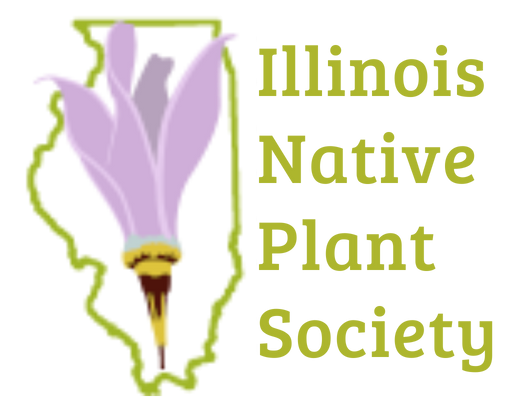Erigenia is a peer-reviewed journal of the Illinois Native Plant Society. It is named for Erigenia bulbosa, the Harbinger-of-the-spring, one of our earliest blooming woodland plants and a species that serves as a promise of things to come. The first issue was published in August 1982.
We invite the submission of original articles on the botanical resources of Illinois and adjacent states. Topics accepted include the following:
- Taxonomy of vascular plants, mosses, algae, lichens, and fungi;
- Floristics and noteworthy collections (with voucher specimen citations);
- Ecology of species, communities, and their biotic and abiotic interactions;
- Restoration and management of natural areas;
- Natural history of Illinois, including geology and biogeography;
- Ethnobotany of native plants;
- Horticulture as it relates to native plants in restored or cultural environments and
- Biographical reviews of botanists and explorers
Editorial Staff
Editor:
John Taft
erigenia.editor@gmail.com
Associate Editors:
Jason Koontz
Eric Ulaszek
Suneeti Jog
Instructions for Authors
Download these instructions as a PDF here: Erigenia Submission Guidelines
General Guidelines
Authors may submit material in an e-mail attachment to erigenia.editor@gmail.com. Manuscripts must be submitted as a Microsoft Word© document. Use Times New Roman 12-pt font, double line spacing, 1-inch margins, left-side alignment, and number on each page. Include any tables on separate pages (s) at the end of the document. Place figure captions at the end of the Word document. Figures must be separate files with the figure number in the file name. Tables and illustrations must fit in a 7 x 9 inch area. Retain copies of each file.
Title Page
For each author, list affiliation, street address, phone number, and e-mail address.
Abstracts
All papers should include an abstract of up to 250 words. The ABSTRACT should state the goals, principal results, and major conclusions of the paper.
Taxonomic Names
Cite the botanical nomenclature utilized in the manuscript or, alternatively, include taxonomic authority for each taxon. Common names should be referenced following the first use of a scientific name; thereafter, scientific or common names can be used alone if done so consistently. Lists of species in tables and appendices need only to include scientific names to be referenced to a scientific name. Thereafter, scientific names are recommended, but either may be used if done so consistently.
Proofs
Authors will have the opportunity to review and make any necessary corrections to their articles before publication.
Page Charges
There are no page charges for Erigenia.
Specific Formatting Guidelines
Manuscript Submission
Submitted manuscripts must be in English language to be considered for review. Submit by e-mail to erigenia.editor@gmail.com. Please provide e-mail addresses of all authors. Following submission, the corresponding author will receive an acknowledgment e-mail, and all co-authors will be contacted for notification of their affiliation with the submitted manuscript.
Below are formatting guidelines for manuscript preparation. Submission of a manuscript implies that the work described has not been published before nor is under consideration anywhere else. It is assumed that prior approval for content has been provided by any co-authors.
Permissions
Authors wishing to include figures, tables, or text passages that have already been published must obtain permission from the copyright owner(s) for re-use. Any material received without such evidence will be assumed to originate from the authors.
Formatting Guidelines
Include Title Page, Abstract, Keywords, Acknowledgements, Manuscript.
Title Page
Include:
The name(s) of the author(s)
A concise and informative title
The affiliation(s) and street address(es) of the author(s)
The e-mail address and telephone number(s) of the corresponding author.
Abstract
Provide an abstract of 150 to 250 words. The abstract should not contain any undefined abbreviations, acronyms, or unspecified references.
Keywords
Provide 4 to 6 keywords or phrases not used in the title for indexing purposes.
Acknowledgments
Document funding sources and assistance.
Manuscript
Research papers:
Generally should include Introduction, Methods, Results, Discussion, and Literature Cited sections. In the Introduction, include study goals and the primary research questions. For floristics manuscripts, guidelines found in Palmer and Richardson (2012) provide a useful framework for effective studies.
Palmer, M. W. and J. C. Richardson. 2012. Biodiversity data in the information age: do 21st Century floras make the grade? Castanea 77(1):46-59.
Text formatting guidelines:
– Manuscripts should be developed using 12-point Times New Roman for text with double line spacing, 1-inch margins, and left-aligned.
– Scientific names: Use italics. Use of common names (e.g., in parentheses) with the first usage of a species name is encouraged (except Tables and figures). Cite botanical nomenclature utilized in Methods; otherwise, include authority for each taxon.
– Use automatic numbering to number both lines and pages.
– Use tab stops for indents, not the space bar.
– Use the equation editor for equations.
– Save your file in *.docx format (MS Word).
Headings:
Please use no more than three levels of displayed headings: Small Caps for major units (e.g., Introduction), Bold for Sections, Underlined for Subsections
Abbreviations:
Abbreviations and acronyms should be defined at first mention and used consistently thereafter.
Footnotes:
Footnotes can be used to give additional information and are numbered consecutively.
Citations:
Cite references in the text by name and year in parentheses. Some examples:
The results are consistent with other findings (Thompson 1990).
This result contradicts the findings by Becker and Seligman (1996).
This effect has been widely studied (Abbott 1991; Baker et al. 1995a, b; Kemp and Solter 1998; Dawson et al. 1999, 2000).
Literature Cited:
The list of references should only include works that are cited in the text and that have been published or accepted for publication. Personal communications and unpublished works should only be mentioned in the text. Do not use footnotes or endnotes as a substitute for a reference list. Reference list entries should be alphabetized by the last names of the first author of each work. Order chronologically any multi-author publications with the same first author. Reference style examples are listed below.
– Journal articles (use the full journal title)
1Terri, J. A. and L. G. Stowe. 1976. Climatic patterns and the distribution of C4 grasses in North America. Oecologia 23:1-12.
Titlyanova, A. A., I. P. Romoanova, N. P. Koshykh, and N. P. Mironycheva-Tokareva. 1999. Pattern and process in above-ground and below-ground components of grassland ecosystems. Journal of Vegetation Science 10:307-320.
– Book
Mohlenbrock, R. H. 2014. Vascular flora of Illinois: a field guide. Fourth edition. Southern Illinois University Press, Carbondale.
– Book chapter
von Ende, C. N. 1993. Repeated-measures analysis: growth and other time-dependent measures. Pages 113-137 in S.M. Scheiner and J. Gurevitch, eds. Design and Analysis of Ecological Experiments. Chapman and Hall, N.Y.
– Online document
Illinois Endangered Species Protection Board. 2015. Checklist of endangered and threatened animals and plants of Illinois. Illinois Endangered Species Protection Board, Springfield, IL. 18 pp. http://www.dnr.state.il.us/espb/index.htm. Accessed 15 November 2016
– Dissertation
Zinko, U. 2004. Plants go with the flow – predicting the spatial distribution of plant species in the boreal forest. Ph.D. thesis. Uppsala University, Uppsala, SE
– Technical report
White, J. 1978. Illinois natural areas inventory. Technical report. Vol. 1. Survey methods and results. Illinois Natural Areas Inventory, Urbana, Illinois.
Tables:
Use the table function in Word or tabs, not spreadsheets. All tables are to be numbered using Arabic numerals and should always be cited in the text in consecutive numerical order. For each table, supply a table caption above the table explaining the components of the table and defining any abbreviations.
Figures:
Supply all figures electronically as separate files. Indicate using the file suffix what graphics program was used to create the artwork. For vector graphics, the preferred format is Encapsulated Postscript (EPS); for halftones, please use Tag Image File Format (TIFF). Microsoft Office© files are also acceptable. Vector graphics containing fonts must have the fonts embedded in the files. Name your figure files with “Fig” and the figure number, e.g., Fig 1. eps.
For line figures (black and white graphics with no shading), consider readability by avoiding faint lines and lettering. Scanned line drawings and line drawings in bitmap format should have a minimum resolution of 1200 dpi.
Halftone figures (photographs, drawings, or paintings) should have a minimum resolution of 300 dots per inch (dpi). Color illustrations are unavailable at this time.
Use consistent font size for lettering throughout the artwork. Do not include titles or captions within your illustrations. All figures are to be numbered using Arabic numerals and cited in the text in consecutive numerical order. Each figure should have a concise caption describing what the figure depicts. Include the captions at the end of the manuscript text file, not in the figure file.

